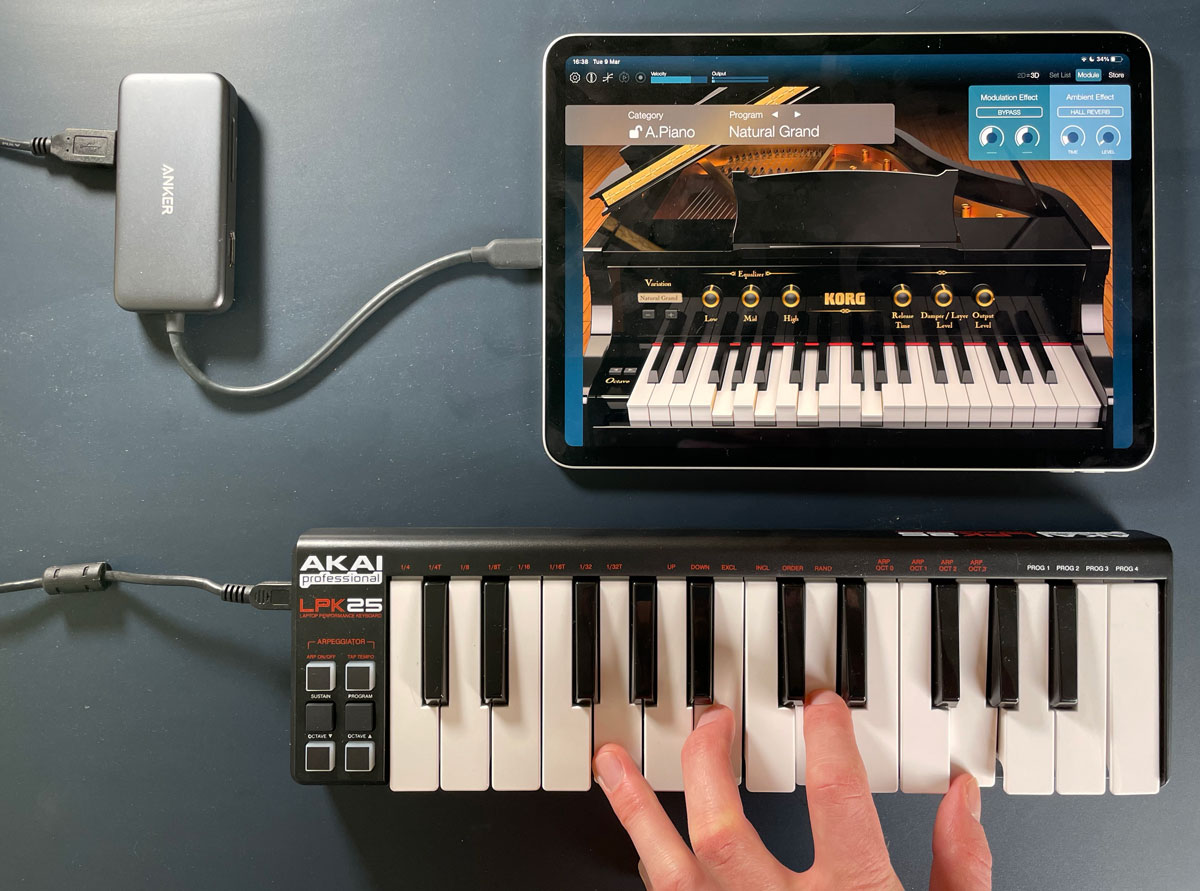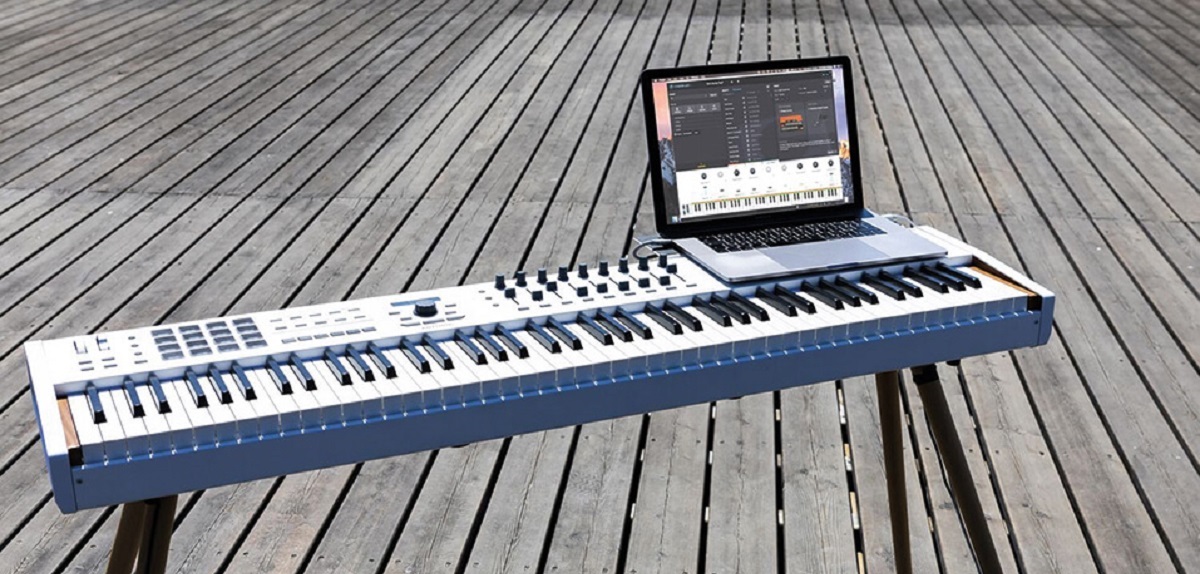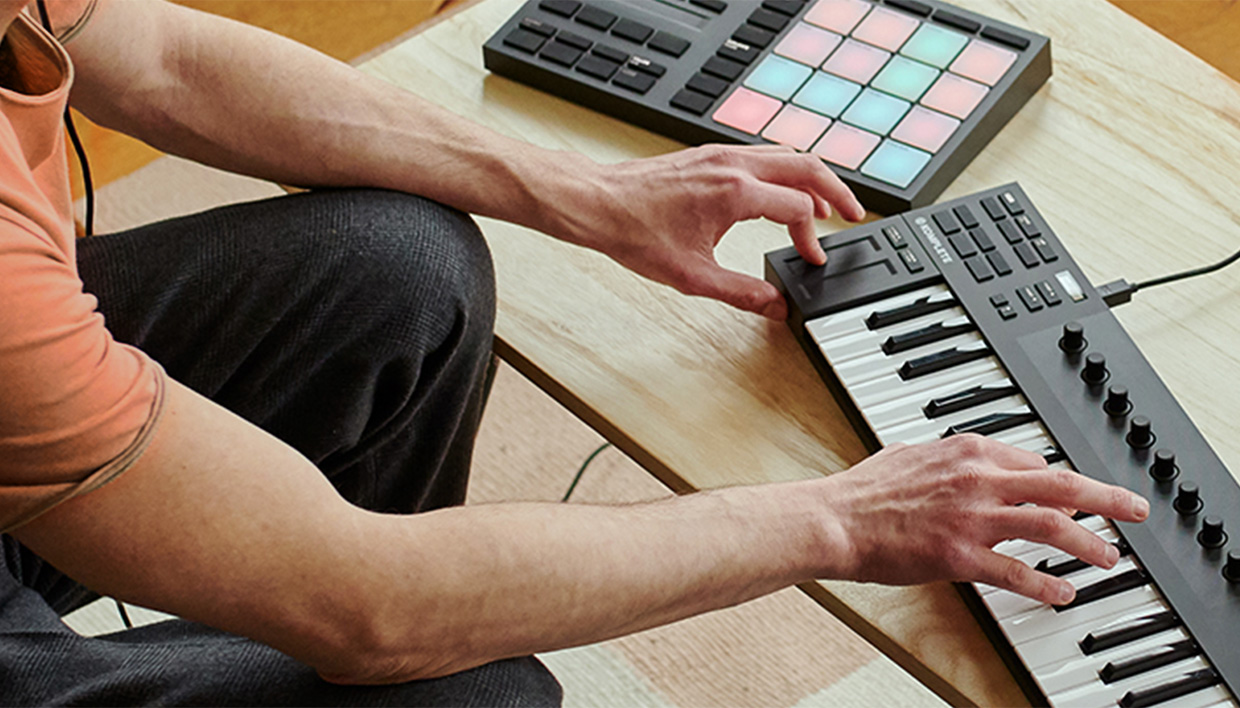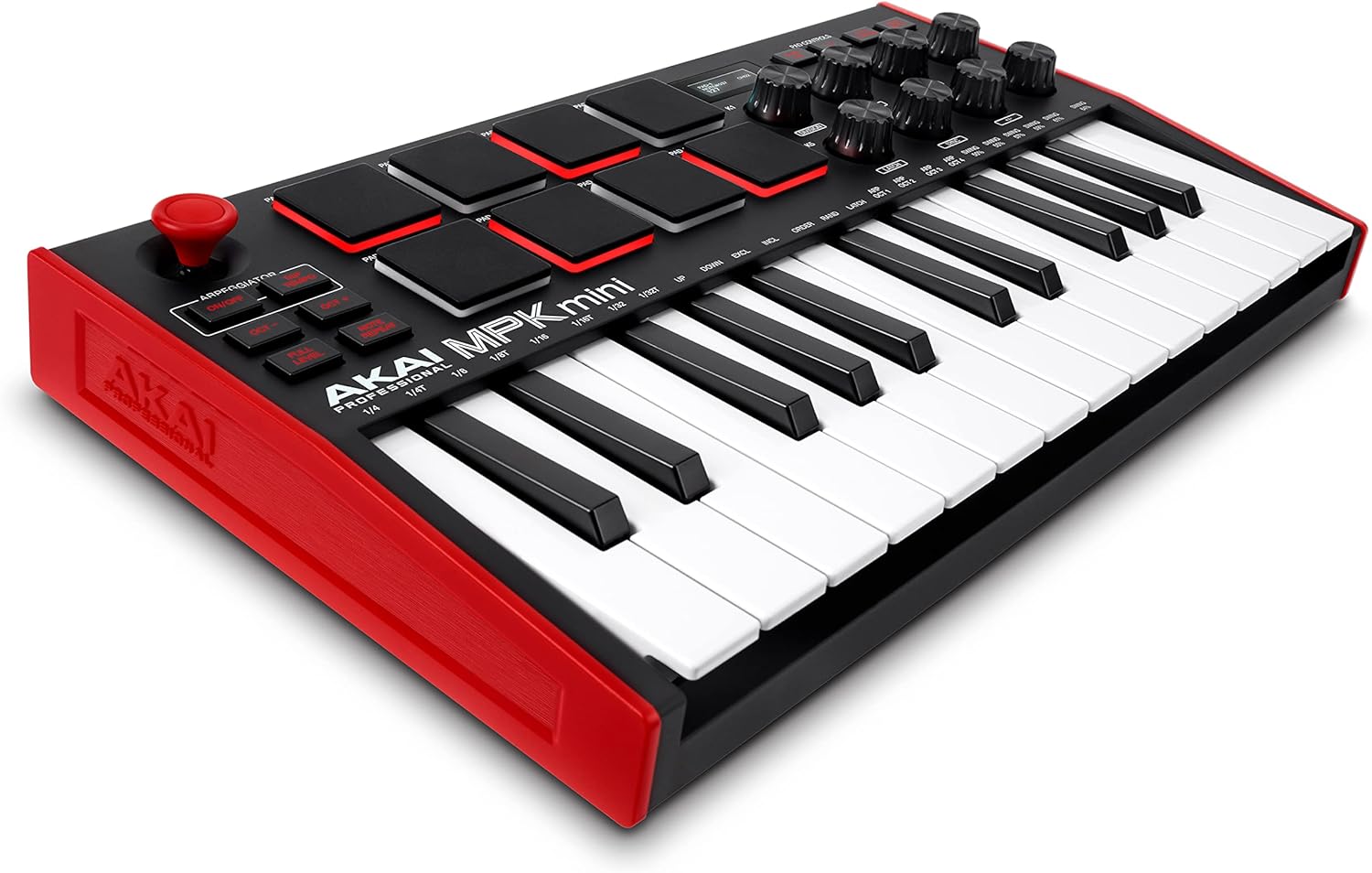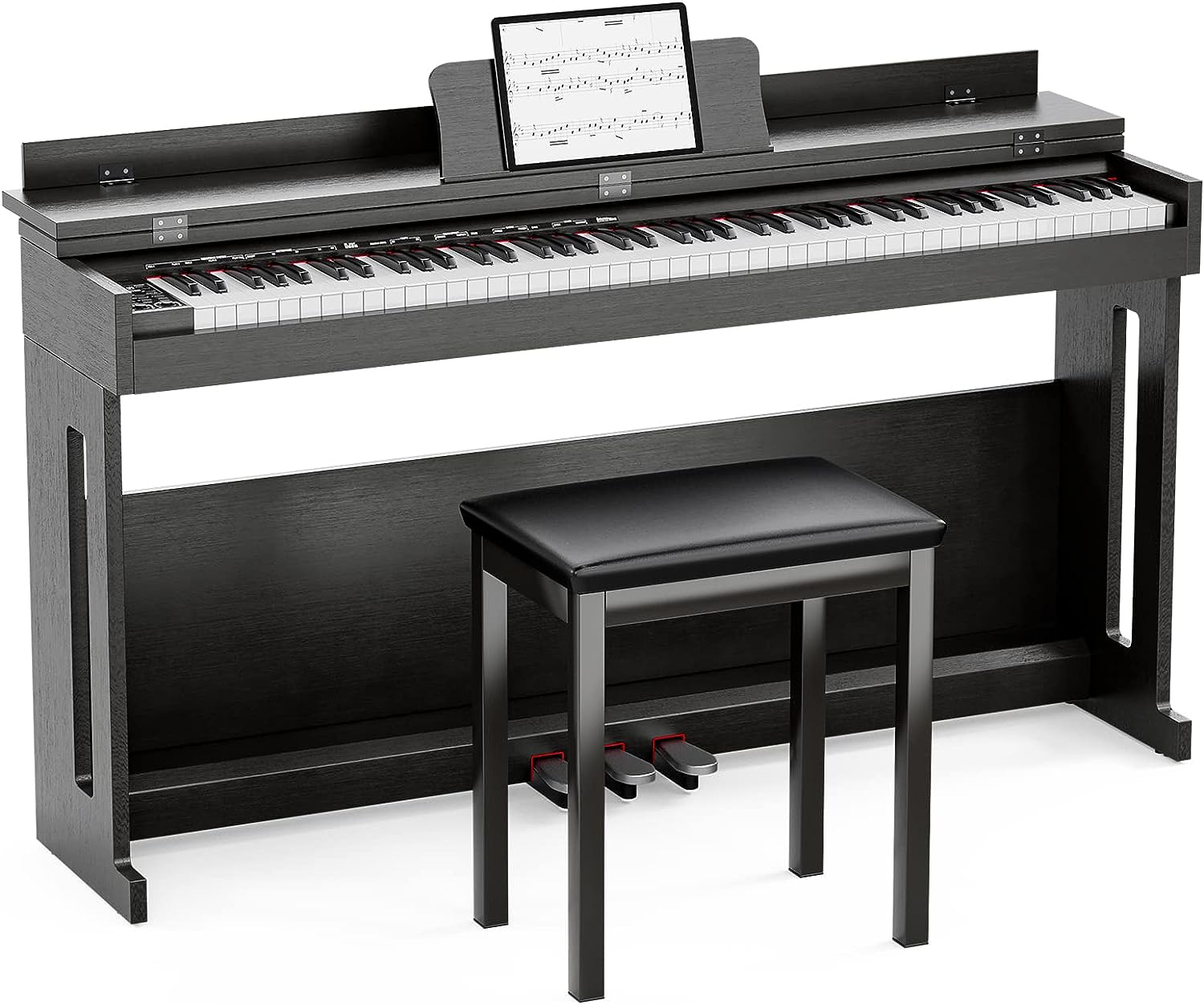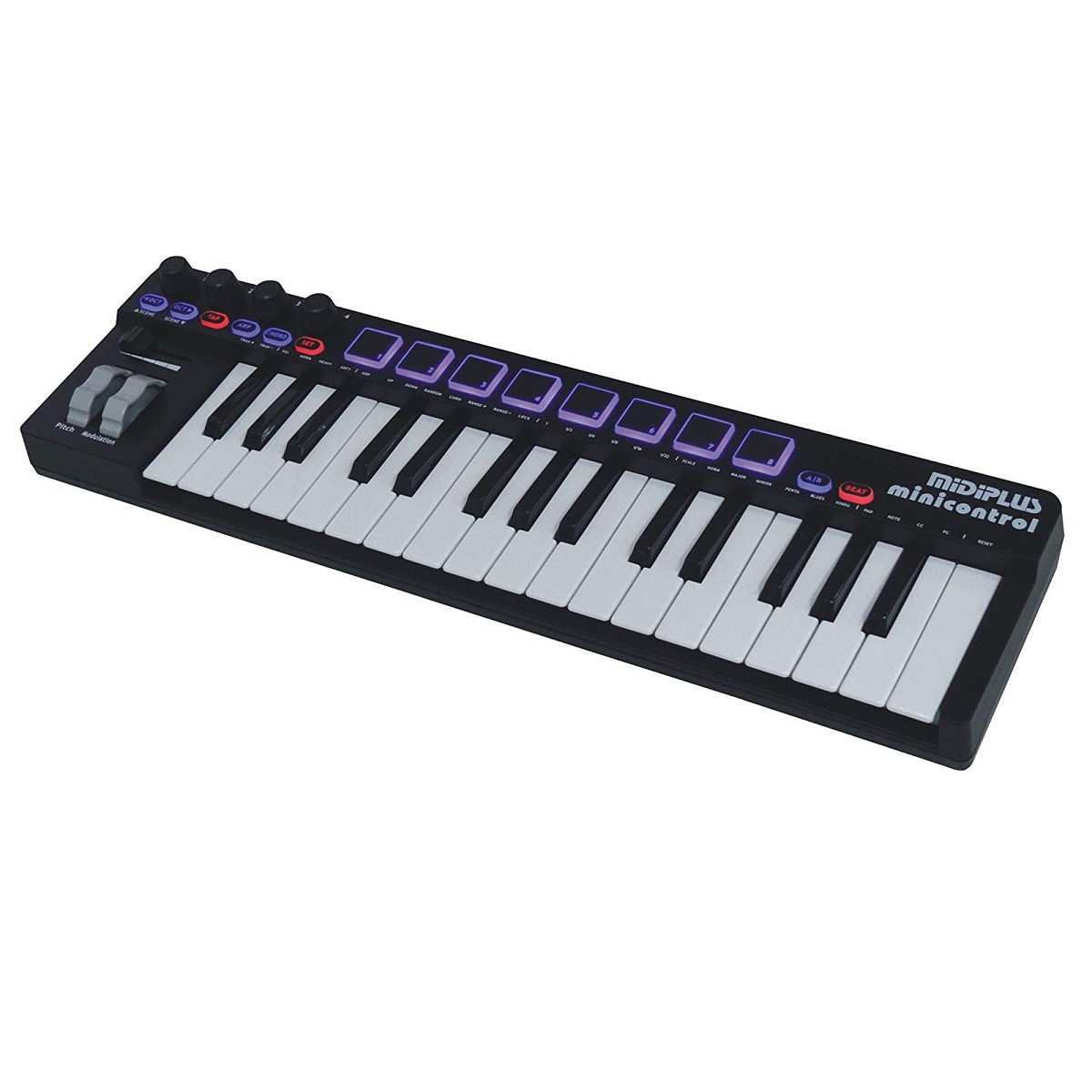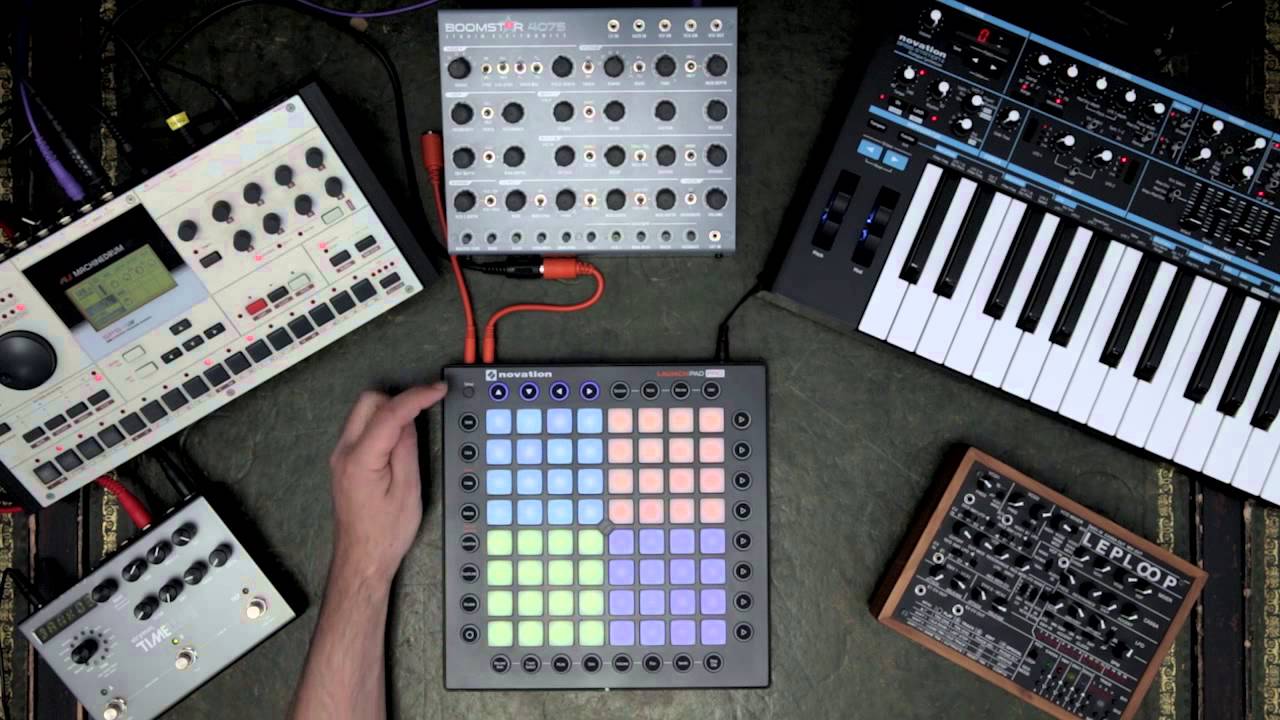Introduction
Are you looking to expand the sonic capabilities of your MIDI keyboard? Adding voices to your MIDI keyboard can unlock a world of creative possibilities, allowing you to explore a diverse range of sounds and textures. Whether you're a seasoned musician or just starting out, incorporating new voices into your setup can breathe fresh life into your music.
In this guide, we'll walk you through the process of adding voices to your MIDI keyboard, from understanding the basics of MIDI keyboards to selecting the right voice module and seamlessly integrating it with your existing setup. By the end of this tutorial, you'll be well-equipped to enhance your musical compositions with a rich palette of voices and tones.
Adding voices to your MIDI keyboard isn't just about expanding your sound library; it's about unleashing your creativity and pushing the boundaries of your musical expression. Whether you're drawn to the lush textures of orchestral strings, the intricate timbres of world instruments, or the cutting-edge sounds of modern synthesizers, the right voice module can open up a world of sonic exploration.
So, let's dive in and discover how you can elevate your music by adding voices to your MIDI keyboard. Whether you're a composer, performer, or producer, this guide will equip you with the knowledge and skills to take your musical journey to new heights.
Understanding MIDI Keyboards
Before delving into the process of adding voices to your MIDI keyboard, it’s essential to grasp the fundamentals of MIDI (Musical Instrument Digital Interface) and how MIDI keyboards function. Unlike traditional keyboards, MIDI keyboards do not produce sound on their own. Instead, they serve as controllers that generate and transmit digital signals, allowing you to trigger sounds from external devices such as computers, synthesizers, and sound modules.
MIDI keyboards come in various configurations, ranging from compact, portable controllers to full-sized, weighted keyboards that mimic the feel of acoustic pianos. These keyboards feature keys, knobs, sliders, and buttons that enable you to manipulate and control various aspects of sound production and performance.
One of the key advantages of MIDI keyboards is their versatility. They can be used in a wide array of musical contexts, from studio recording and live performances to sound design and electronic music production. Their compatibility with a diverse range of software and hardware makes them indispensable tools for modern musicians and producers.
Understanding the intricacies of MIDI communication and the role of MIDI keyboards in the music production ecosystem is crucial for anyone looking to expand their sonic horizons. By harnessing the power of MIDI, you can seamlessly integrate new voices and sounds into your creative workflow, unleashing a world of sonic possibilities at your fingertips.
Whether you’re a keyboardist, composer, or electronic music enthusiast, having a solid grasp of MIDI keyboards will empower you to harness the full potential of your musical ideas. Now that we’ve laid the groundwork for understanding MIDI keyboards, let’s explore the next steps in adding voices to your setup.
Choosing the Right Voice Module
When it comes to adding voices to your MIDI keyboard, selecting the right voice module is a pivotal decision that can significantly impact your musical journey. Voice modules, also known as sound modules or tone generators, are external devices that house a diverse array of high-quality instrument sounds, ranging from traditional pianos and orchestral instruments to cutting-edge synthesizer tones and exotic world sounds.
Before diving into the selection process, consider the sonic palette you wish to explore. Are you drawn to the lush textures of acoustic instruments, or are you seeking innovative electronic sounds to fuel your sonic explorations? Understanding your musical preferences and the genres you wish to explore will guide you in choosing a voice module that aligns with your creative vision.
Additionally, assess the connectivity options of the voice module. Ensure that it is compatible with your MIDI keyboard and offers seamless integration with your existing setup. Some voice modules feature USB connectivity, while others utilize traditional MIDI connections, so it’s essential to select a module that suits your specific requirements.
Furthermore, consider the polyphony and multitimbral capabilities of the voice module. Polyphony refers to the number of simultaneous notes a module can produce, while multitimbrality pertains to the module’s ability to play multiple sounds at once. These factors are crucial, especially for complex musical arrangements and layered compositions.
Another critical aspect to evaluate is the sound quality and realism of the voices. Look for voice modules that boast high-fidelity samples and expressive articulations, as these elements contribute to the authenticity and depth of your musical performances.
Finally, explore the editing and customization features offered by the voice module. The ability to tweak and personalize the sounds to suit your musical style can elevate your creative process and imbue your compositions with a unique sonic identity.
By carefully considering these factors and conducting thorough research, you can select a voice module that complements your artistic vision and empowers you to craft compelling musical experiences. With the right voice module at your disposal, you’ll be primed to embark on a sonic odyssey that transcends musical boundaries.
Connecting the Voice Module to Your MIDI Keyboard
Once you’ve chosen the ideal voice module to expand your MIDI keyboard’s sonic capabilities, the next step is to seamlessly integrate it into your setup. Properly connecting the voice module to your MIDI keyboard is essential for unlocking the full potential of the additional voices and ensuring a smooth and efficient workflow.
First and foremost, identify the connectivity options available on both your MIDI keyboard and the selected voice module. Common connection methods include MIDI cables, USB, and in some cases, wireless Bluetooth connectivity. Ensure that the chosen method is compatible with both your MIDI keyboard and the voice module to establish a reliable link between the two devices.
If your MIDI keyboard and voice module feature traditional MIDI ports, connect the MIDI output of the keyboard to the MIDI input of the voice module using standard MIDI cables. For devices equipped with USB connectivity, establish a direct USB connection between the keyboard and the voice module, allowing for seamless data transfer and communication.
Wireless connectivity, while less common, may be available in some modern MIDI keyboards and voice modules. If both devices support Bluetooth or other wireless protocols, follow the manufacturer’s instructions to pair and establish a stable wireless connection between the keyboard and the voice module.
Once the physical connection is established, configure the MIDI settings on both the keyboard and the voice module to ensure proper communication. This may involve selecting the MIDI input source on the voice module and configuring the MIDI output settings on the keyboard to transmit data to the module effectively.
It’s important to note that some voice modules may require additional power sources, such as AC adapters or batteries. Ensure that the voice module is powered on and functioning properly before proceeding to test the connectivity with your MIDI keyboard.
By carefully following the manufacturer’s instructions and paying attention to the specific connectivity requirements of your devices, you can create a robust and reliable link between your MIDI keyboard and the newly integrated voice module. With the connection established, you’re ready to explore a myriad of expressive sounds and textures, elevating your musical performances and compositions to new heights.
Configuring the Voice Module
Once the voice module is connected to your MIDI keyboard, it’s essential to configure its settings to ensure seamless integration and optimal performance. Configuring the voice module involves fine-tuning its parameters, setting up MIDI channels, and customizing sound presets to align with your creative vision.
Begin by familiarizing yourself with the user interface of the voice module. Navigate through the module’s controls, knobs, and display if available, to access its configuration settings. Some voice modules may feature dedicated software interfaces that allow for in-depth customization and editing of sound parameters via a computer or mobile device.
One of the primary configuration steps involves setting the MIDI channel on the voice module. MIDI channels serve as communication pathways between the MIDI keyboard and the voice module, enabling you to trigger specific sounds and voices. Assigning distinct MIDI channels to different instrument voices allows for independent control and manipulation, facilitating complex musical arrangements and performances.
Furthermore, explore the modulation and expression capabilities of the voice module. Many modules offer extensive modulation options, including envelope shaping, LFO (Low-Frequency Oscillator) modulation, and real-time control of parameters such as filter cutoff and resonance. Understanding and configuring these modulation features can imbue your performances with expressive nuances and dynamic sonic textures.
Customizing sound presets and patches is another crucial aspect of configuring the voice module. Tailor the module’s built-in sounds to suit your musical style by adjusting parameters such as attack, release, timbre, and effects. Some voice modules allow for user-created presets, enabling you to craft unique soundscapes and save them for future use.
If the voice module supports layering and splitting of sounds, take advantage of these features to create rich, layered textures and combine multiple voices within a single performance. This adds depth and complexity to your music, allowing for intricate arrangements and captivating sonic landscapes.
Finally, ensure that the voice module is synchronized with your MIDI keyboard’s performance controls, such as pitch bend, modulation wheels, and sustain pedals. Mapping these controls to the voice module’s parameters enhances your expressive capabilities, enabling you to infuse your performances with emotive gestures and articulations.
By meticulously configuring the voice module to align with your artistic intentions and performance requirements, you can harness its full potential and seamlessly integrate it into your musical workflow. With the module finely tuned and customized, you’re poised to explore a vast sonic palette and breathe life into your musical creations.
Testing and Adjusting the Voices
With the voice module successfully configured and integrated with your MIDI keyboard, it’s time to embark on the exciting phase of testing and fine-tuning the newly added voices. This crucial step allows you to explore the sonic capabilities of the module, evaluate its responsiveness, and make adjustments to ensure that the voices align harmoniously with your musical vision.
Begin by selecting a diverse range of voices from the module’s sound library. Test traditional instrument emulations, modern synthesizer tones, and unique soundscapes to gauge the breadth and quality of the available voices. Pay close attention to the expressiveness, dynamics, and realism of each voice, assessing their suitability for different musical genres and performance contexts.
Once you’ve familiarized yourself with the voices, experiment with playing techniques and articulations on your MIDI keyboard to test the responsiveness and playability of the module. Evaluate how the voices react to velocity, aftertouch, and other performance nuances, ensuring that they exhibit the desired level of expressiveness and dynamic range.
During the testing phase, consider the module’s polyphony and multitimbral capabilities. Layer multiple voices, create intricate musical textures, and assess how the module handles complex arrangements and simultaneous sound production. This process allows you to identify any potential limitations and optimize the module’s performance for your specific musical requirements.
As you explore the voices, take note of any adjustments or enhancements needed to align the module’s sonic characteristics with your creative aspirations. Fine-tune sound parameters, such as attack, release, and filter settings, to tailor the voices to your musical style and performance preferences. Additionally, explore the module’s effects and processing options to add depth and dimension to the voices, further refining their sonic impact.
Testing the voices in the context of musical compositions and improvisations provides valuable insights into their versatility and suitability for different genres. Experiment with various musical styles, from ambient soundscapes to energetic rhythmic patterns, and assess how the voices contribute to the overall musical narrative.
Throughout the testing phase, keep an open mind and remain receptive to unexpected sonic discoveries. Embrace the opportunity to push the boundaries of traditional sound palettes and uncover new creative possibilities offered by the diverse voices within the module.
By thoroughly testing and adjusting the voices, you can ensure that the newly integrated sounds seamlessly complement your musical expression, enriching your performances and compositions with a captivating array of sonic colors and textures.
Conclusion
Embarking on the journey of adding voices to your MIDI keyboard opens a gateway to a boundless realm of sonic exploration and creative expression. Throughout this guide, we’ve navigated the process of integrating a voice module with your MIDI keyboard, from understanding the intricacies of MIDI communication to selecting the ideal voices and configuring the module to align with your artistic vision.
By delving into the world of MIDI keyboards, you’ve gained a deeper appreciation for their versatility and the pivotal role they play in modern music production and performance. These controllers serve as conduits for unleashing a diverse array of voices, from traditional instruments to cutting-edge electronic sounds, empowering you to sculpt captivating musical landscapes.
Choosing the right voice module is a pivotal decision that shapes the sonic identity of your musical endeavors. By considering factors such as sound quality, connectivity, and customization options, you’ve set the stage for a seamless integration that amplifies your creative potential.
Connecting the voice module to your MIDI keyboard marks the convergence of technology and artistry, establishing a robust link that facilitates the seamless transmission of musical ideas and expressions. Through careful connectivity and configuration, you’ve laid the groundwork for a cohesive musical ecosystem that fosters uninhibited creativity.
Testing and adjusting the voices within the module has allowed you to explore their sonic intricacies, responsiveness, and expressive capabilities. This iterative process of refinement and exploration has honed the voices to resonate harmoniously with your artistic intentions, enriching your musical palette with a myriad of evocative sounds.
As you venture forward with your expanded sonic arsenal, remember that the process of adding voices to your MIDI keyboard is not merely a technical endeavor; it’s a journey of artistic discovery and innovation. Embrace the newfound voices as conduits for channeling your musical vision, transcending boundaries, and crafting immersive sonic experiences that resonate with audiences and fellow creators alike.
With the knowledge and skills acquired in this guide, you’re poised to embark on a musical odyssey that transcends conventions and ventures into uncharted sonic territories. As you harness the power of added voices, may your compositions flourish, your performances captivate, and your creative spirit soar to new heights.







